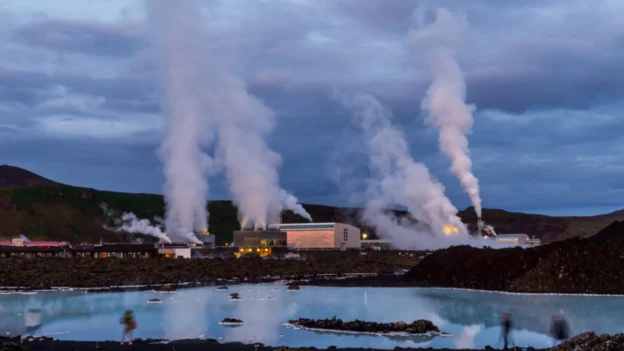Machine learning models are revolutionizing the analysis of massive data to identify the best locations for geothermal energy drilling, which could significantly lower exploration costs. In this context, governments and private companies are investing heavily in research and development in the hope of catalyzing innovations that will advance the field of renewable energy, thus driving the green transition globally.
Optimization of geothermal energy with AI
Geothermal energy is a natural source found within the Earth’s interior and has the capacity to meet global energy demands, although accessing it presents significant challenges, but even so, with recent advances in artificial intelligence (AI) and other digital technologies, some energy experts argue that these tools can optimize energy production, increasing the potential for geothermal energy globally.
Thus, geothermal geothermal energy can be used in a variety of ways. Direct use, popular for centuries, takes advantage of water heated near the surface, as in hot springs and geysers, to heat buildings without the need for drilling equipment. In contrast, geothermal energy for electricity production requires drilling to extract steam, which then turns a turbine to generate electricity.
However, geothermal drilling faces technological hurdles that make it costly, limiting its adoption. Today, geothermal energy accounts for less than one percent of electricity in the United States, despite its great potential as a renewable energy source. renewable energy source .
Zanskar transforms geothermal exploration
In this scenario, Zanskar, a Utah-based startup, has developed machine learning models to evaluate the best places to drill for geothermal energy. These analyze a vast amount of data to identify optimal locations, which could significantly reduce exploration costs and encourage greater investment in the geothermal sector, thus diversifying the green energy market.
Carl Hoiland, CEO of Zanskar, noted that in the last year and a half they have discovered more hidden geothermal resources than in the previous decade. This progress could encourage more energy companies to invest in the sector. Zanskar recently raised $30 million in a funding round led by Obvious Ventures, bringing its valuation to $115 million.
In total, the company has raised US$45 million to expand its exploration and develop new geothermal plants in collaboration with established companies.
The enthusiasm for geothermal energy is palpable, given its potential to provide an unlimited renewable resource. However, development costs are currently five times those of wind power, with 1 MW of geothermal power costing approximately $8.7 million. This high cost is largely due to the difficulty of finding suitable reservoirs to drill, which can result in multiple unsuccessful attempts before success.
Accurate geothermal exploration
To address this challenge, Zanskar uses satellite data, geological surveys and seismic waves to predict the best drilling sites. The accuracy of these machine learning models improves with the amount of data available, which could be combined with advanced drilling techniques to make geothermal energy more accessible and economical.
The U.S. National Renewable Energy Laboratory. (NREL) is also advancing AI and machine learning techniques to optimize renewable energy production. They have developed algorithms and tools to improve reservoir characterization, reduce drilling costs and optimize geothermal field operations.
As of 2018, the U.S. Geothermal Technologies Office. (GTO) has funded research in machine learning to innovate in geothermal exploration and operations technologies. These advances could overcome historic obstacles in the development of geothermal energy, making it possible to tap into abundant renewable resources globally.
The implementation of machine learning in geothermal exploration will reduce costs, increase accuracy in the identification of subway resources and reduce the environmental footprint, favoring social acceptance and accelerating the transition to a sustainable energy matrix.
Follow us on social networks and don’t miss any of our publications!
Inspenet.com YouTube LinkedIn Facebook Instagram X
Source: worldenergytrade
Photo: Shutterstock

